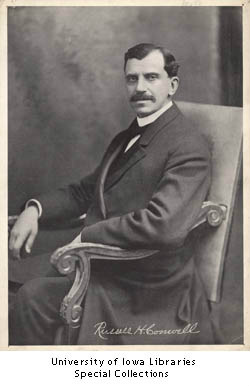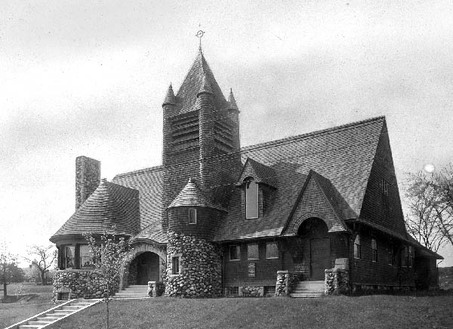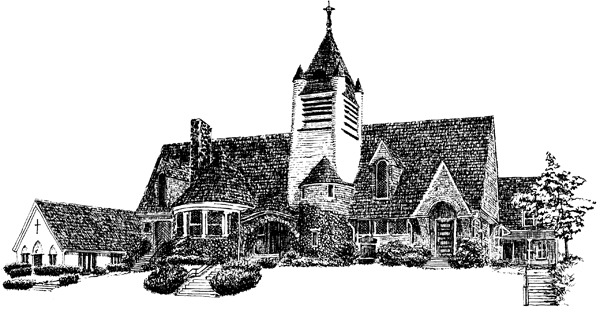Our History

On November 11, 1833, the General Court of Massachusetts established the equality of all religious sects as well as the repeal of state authority over churches. One month later, on December 11, 1833, twenty-one Baptists in Lexington met to form a church. Articles of Faith and a Covenant were read and signed and three members were baptized. This constituted the first “free” church in Lexington. These Baptists were then able to follow their belief in the Trinity and to exercise their practice of baptism of adults by immersion. It was not until January 13, 1892, that the First Baptist Church of Lexington voted to become incorporated.
The early church experienced periods of growth as well as despair under numerous ministers.
By 1880, the church had dwindled to eighteen members with the building in total disrepair. Several members thought the time had come to close the church and sell the property. One member, Ester Tidd Barrett, sought the advice of Russell H. Conwell, a prominent Boston attorney. Conwell suggested a meeting with the church members. It was determined that if the church were to continue, a new building would be needed. Conwell was so impressed with the sincerity of the group that he determined to help them out.
He encouraged the congregation by raising funds, contributing physical labor, and by acting as a supply preacher. Conwell had considered the ministry earlier in his life and was licensed to preach. On November 28, 1880, the church voted unanimously to invite Conwell to become the pastor. He was to be given a salary of six hundred dollars. He told the congregation that the salary was less than he made as an attorney. He would take the position if the congregation agreed to double his salary each time he doubled the church membership. Conwell left the church in 1882 to accept a pulpit in Philadelphia. He later went on to build the Temple Baptist Church and founded Temple University.
After Conwell left, the church continued to grow. By 1891, the membership had grown to one hundred thirty members. One of the customs of the church was to have a monthly social and supper. The kitchen was in the basement equipped with a kerosene stove used to keep food hot that had been prepared in homes. On May 13, 1891, after a supper, it is believed that the stove was not turned off which resulted in a disastrous fire that burned the church to the ground. Over the next few months, a debate ensued as to where to rebuild the church. Some thought that the slow growth of the church was because its location was too far from the center of the town. In the end, the decision was made to rebuild in the same location. On October 21, 1892, the cornerstone was laid with a time capsule placed underneath. The dedication of the new church took place on June 29, 1893. One of the participating clergymen, Reverend J.P. Abbott, made a plea to clear off the balance remaining. “The amount needed was about $500 which amount was raised by Bro. Abbott in about fifteen minutes, thus enabling us to dedicate our church free of debts.” Once again, a small group of devoted people had raised the funds to build the church.
The early church experienced periods of growth as well as despair under numerous ministers.
By 1880, the church had dwindled to eighteen members with the building in total disrepair. Several members thought the time had come to close the church and sell the property. One member, Ester Tidd Barrett, sought the advice of Russell H. Conwell, a prominent Boston attorney. Conwell suggested a meeting with the church members. It was determined that if the church were to continue, a new building would be needed. Conwell was so impressed with the sincerity of the group that he determined to help them out.
He encouraged the congregation by raising funds, contributing physical labor, and by acting as a supply preacher. Conwell had considered the ministry earlier in his life and was licensed to preach. On November 28, 1880, the church voted unanimously to invite Conwell to become the pastor. He was to be given a salary of six hundred dollars. He told the congregation that the salary was less than he made as an attorney. He would take the position if the congregation agreed to double his salary each time he doubled the church membership. Conwell left the church in 1882 to accept a pulpit in Philadelphia. He later went on to build the Temple Baptist Church and founded Temple University.
After Conwell left, the church continued to grow. By 1891, the membership had grown to one hundred thirty members. One of the customs of the church was to have a monthly social and supper. The kitchen was in the basement equipped with a kerosene stove used to keep food hot that had been prepared in homes. On May 13, 1891, after a supper, it is believed that the stove was not turned off which resulted in a disastrous fire that burned the church to the ground. Over the next few months, a debate ensued as to where to rebuild the church. Some thought that the slow growth of the church was because its location was too far from the center of the town. In the end, the decision was made to rebuild in the same location. On October 21, 1892, the cornerstone was laid with a time capsule placed underneath. The dedication of the new church took place on June 29, 1893. One of the participating clergymen, Reverend J.P. Abbott, made a plea to clear off the balance remaining. “The amount needed was about $500 which amount was raised by Bro. Abbott in about fifteen minutes, thus enabling us to dedicate our church free of debts.” Once again, a small group of devoted people had raised the funds to build the church.
 First Baptist Church Early 1900's
Courtesy of the Lexington Historical Society
First Baptist Church Early 1900's
Courtesy of the Lexington Historical Society
There have been many fund-raisers needed to support the church. One of the chief ways the women raised funds for projects was by having fairs. Various groups in the church shared the responsibility of organizing the fair. An annual auction and dinner was started in 1991, to help fund a new organ. The auctions were held for nine years. The Joyful Noise Coffeehouse was also started in 1991. All of the funds raised by the Coffeehouse are given to local charities, now totaling $60,000. The monthly Coffeehouse shows have continued to grow in popularity over the years. In June 2006, the church kicked off a new capital campaign to revitalize the parsonage. The members of First Baptist Lexington are dedicated to maintaining their facilities and supporting the community.
Twenty-eight ministers have served the church over the years, each making a unique contribution to the life and growth of First Baptist Lexington. Two of our ministers have served longer than most: Rev. Crawford O. Smith from 1934-1956 and Rev. Brian S. Dixon from 1980-1998. Our church history, “This Way We Came,” by Anne MacDougall was written to commemorate our 150th anniversary. This book makes particular mention of the tenure of Rev. Robie Mitchell Ruston who became our minister in May of 1925 and “led the church into an era of growth and prosperity similar to the Conwell era.” He organized Wednesday evening services, preceded by a supper. He had a morning and evening on Sunday. Between 1926 and 1927, he baptized over one hundred young people and adults. He encouraged the building of the Conwell Hall addition. To meet the mortgage payments, he divided the town into nine sections (later to become the women’s circles) and encouraged each group to develop strategies to contribute one hundred dollars a year towards the mortgage. He encouraged the clergy of the town to develop an ecumenical nativity pageant that was an annual event for several years. Admission to the event was a contribution of food or money to be distributed among the town’s needy. Reverend Rushton resigned in 1934 to accept a pulpit in Winchester, Massachusetts.
During the 150th year celebration, there was a dramatic presentation by Gordon-Conwell Theological Seminary students of the play by Albert Johnson, “Roger Williams and Mary.” The play concludes with these lines, “The story is not ended, for the story is yours and mine, and the telling continues. And each one, each day, tells a part. Tells it in daily living.” The history of First Baptist Lexington continues each day through worship, Christian education, missions, outreach, and fundraising.
Twenty-eight ministers have served the church over the years, each making a unique contribution to the life and growth of First Baptist Lexington. Two of our ministers have served longer than most: Rev. Crawford O. Smith from 1934-1956 and Rev. Brian S. Dixon from 1980-1998. Our church history, “This Way We Came,” by Anne MacDougall was written to commemorate our 150th anniversary. This book makes particular mention of the tenure of Rev. Robie Mitchell Ruston who became our minister in May of 1925 and “led the church into an era of growth and prosperity similar to the Conwell era.” He organized Wednesday evening services, preceded by a supper. He had a morning and evening on Sunday. Between 1926 and 1927, he baptized over one hundred young people and adults. He encouraged the building of the Conwell Hall addition. To meet the mortgage payments, he divided the town into nine sections (later to become the women’s circles) and encouraged each group to develop strategies to contribute one hundred dollars a year towards the mortgage. He encouraged the clergy of the town to develop an ecumenical nativity pageant that was an annual event for several years. Admission to the event was a contribution of food or money to be distributed among the town’s needy. Reverend Rushton resigned in 1934 to accept a pulpit in Winchester, Massachusetts.
During the 150th year celebration, there was a dramatic presentation by Gordon-Conwell Theological Seminary students of the play by Albert Johnson, “Roger Williams and Mary.” The play concludes with these lines, “The story is not ended, for the story is yours and mine, and the telling continues. And each one, each day, tells a part. Tells it in daily living.” The history of First Baptist Lexington continues each day through worship, Christian education, missions, outreach, and fundraising.
